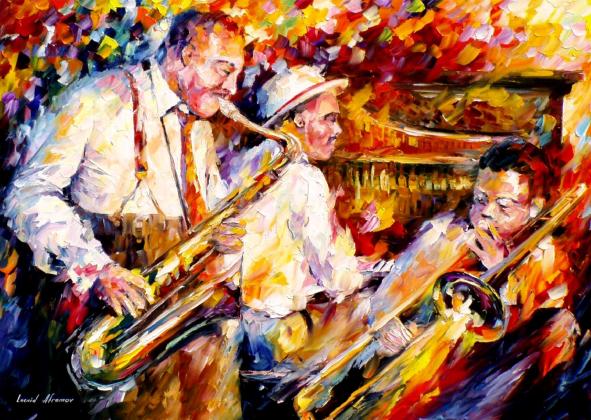“I never thought jazz was meant to be a museum piece like other dead things once considered artistic” -Miles Davis
Like Mia from the hit movie La La Land, I hated jazz. The whiny melodies, the seemingly endless improv sessions in the middle of a standard, the sloppy syncopation of swung lines—it just didn’t make sense. Why would anyone care to listen to jazz, let alone devote their whole lives to this slapdash music style? Needless to say, I was less than excited to learn that I would be joining my sister at some obscure jazz club in New York City to listen to some random jazz group on one of my last days of freedom before college. On the plus side, the club served food. I was pleasantly surprised to walk into what appeared to be a restaurant, already aglow with the murmur of conversations around me, as I sat down at a table adjacent to an empty stage. A tarnished saxophone sat on stage just out of arm’s reach, seeming to cooly asses the audience from its position behind a mic stand. As I carefully sipped the bowl of piping-hot gumbo in front of me, I steeled myself for what I believed was going to be one of the most banal concerts of all time. Boy was I wrong.
The band filtered out: a large saxophone player who picked up his instrument with the tenderness of a mother picking up her first-born child, a suave pianist, a shrimpy-looking drummer who was dwarfed by the bass drum, a dorky trombonist, a lanky bass player who sauntered out to a stool before absentmindedly caressing his instrument as though it was his long lost love, and finally a trumpet player, strutting out to center stage. Following only the briefest of introductions, a crash of noise, and the first chart had begun, a song that I had no hope of recognizing. The drummer nodded along to his rhythm, eyes glued to the trumpet player, who punctuated the sentences of the trombonist, who provided the countermelody to the saxophonist, who transformed the tarnished piece of metal sitting alone onstage moments ago into a living being. The saxophone was no longer an instrument, but instead an extension of the man, a living being, caught up in the fabric of the music and adding its own intricate embroidery to the texture. Without any warning, the sax dropped out and the trombonist was now steering the song. All eyes were now on him as the band members spoke to each other in a language I couldn’t understand, with music instead of words and head nods for punctuation. The music crescendoed, increasing in passion and strength until it felt as though the noise would shatter the walls of the room, too ripe with emotion to be contained by mere sheetrock. Then without warning, silence. An ephemeral stillness, followed by the explosion of applause.

One of their later charts, a ballad, nearly brought me to tears. The trumpet player switched to a flugelhorn, before diving into the honey-thick noise created by the saxophone and drum set, outlined by the occasional hiss of the cymbal. He sang through the flugel, a cross between the pure hymn of an angel and the anguished wail of a lost lover, with eyes squeezed shut, body slowly swaying to his own song as it rose in both energy and tempo. Each note hung in the air like embers from a fire, glowing as they floated up to the stars, until the song ended on one final cry behind the sizzle of the cymbals. The remaining songs followed this precedent of spontaneous creation and communication, producing an experience that was both practiced to perfection, and constantly new and changing.
Throughout the entirety of the jazz concert, there was always a conversation between the musicians, a sort of cycle of improvisation and creativity, passed around from person to person. The jazz wasn’t just music. It was a living, breathing force, an entranced being conjured up from the people on stage, and their lumps of noise-making twisted metal and wood. It was alive. And, in spite of what Sebastian from La La Land may believe, something as alive and jazz can never truly die.